In today’s digital world, where online competition is getting tougher day by day, retaining customers is a game-changer for eCommerce success. Putting in place smart strategies to retain clients not only boosts loyalty but also opens up exciting growth opportunities for your business. This article will delve into why customer retention is a big deal for online stores, highlighting key perks, tactics, and tips for building lasting and mutually beneficial bonds with the audience in the online realm.
What Is Customer Retention All About?
Well, user retention on a website is basically how good a site is at keeping visitors interested and active for a while. To work this out, you need to calculate the Customer Retention Rate.
Here’s the customer retention rate formula;
where:
- E – number of customers at the end of the period,
- N – number of new customers acquired during the period,
- S – number of customers at the beginning of the period.
Take the number of customers at the end of the period, subtract the new customers gained during that time, then divide by the number of customers at the start and multiply by 100. For example, if you started with 100 customers, got 20 new ones, and ended with 110, your retention rate would be 90%.
The Customer Retention Rate (CRR) shows how well a company keeps its customers coming back for more.
When it comes to other customer retention metrics, there’s also the customer retention cost. To work this out, divide the total spent on keeping customers by the number of customers retained in that period. This helps companies calculate if their efforts are paying off and if it’s worth investing more in this part of their business.
Why Ecommerce Customer Retention Matters for Online Stores
Keeping active customers is a big deal for online stores because it means:
- Boosted Loyalty: Loyal customers stick around, buy more, and spread the word about your brand, driving sales up.
- Cost Savings: Keeping existing customers happy is cheaper than chasing new ones through costly marketing efforts.
- Bigger Orders: Regulars tend to splurge more and buy extra goodies, bumping up your average order value.
- Feedback and Improvements: Happy customers share insights that help you tweak your service, products, and overall customer experience.
- Competitive Edge: Retained customers become your biggest fans, giving you an edge in the market and drawing in new business.
So, why does eCommerce customer retention matter? Because it’s the secret sauce to online store success. Crafting eCommerce customer retention strategies and cultivating long-term connections with customers are crucial parts of running a top-notch online business.
Customer Behavior Analysis
Considering how customers roll on your site, what they like, and how they shop lets you tailor your communication and solutions to suit their needs. Here’s what diving into how to retain customers in eCommerce through customer behavior analysis involves:
- Customer Segmentation: Splitting your customer base into groups based on shopping habits, preferences, and how often they buy helps you tweak your retention tactics to suit each crew.
- Tracking the Customer Journey: Watching how customers move from browsing to buying helps you spot areas where you can jazz up the user experience and boost sales.
- Satisfaction Check: Getting feedback from customers helps you gauge their happiness levels, spot any issues, and make things right.
- Personalized Communication: Using customer data to dish out personalized offers, recommendations, and deals makes interactions more meaningful and boosts customer loyalty.
- Predicting Behavior: By crunching customer behavior data, you can predict what they’ll do next, helping you keep them coming back for more.
Nailing customer behavior analysis is key to crafting winning retention strategies.
Personalization
Personalization is all about tailoring content, offers, and services to match each customer’s unique wants and needs. This includes serving up personalized product suggestions based on past buys, offering individual discounts or exclusive deals, and sending out personalized messages and alerts. This approach significantly boosts customer retention in eCommerce by creating a more engaging and satisfying shopping experience.
Let’s dive into recommendation algorithms. To set these up, you can tap into ready-made services or “cook up” your own.
Recommendation services are tools that suggest personalized picks to users based on what they like, what they’ve bought before, and other personal details. These tools amp up the user experience, boost satisfaction levels, and hike up conversion rates in online stores, contributing to higher customer retention in eCommerce..
Big-name brands like Amazon, Netflix, Spotify, Alibaba, and eBay are all over various recommendation programs to offer personalized product picks, content, and deals to their customers.
Among the ready-made recommendation services out there are big shots like Amazon Personalize (a machine learning service from Amazon Web Services), Dynamic Yield, Barilliance, Certona, and more. They offer tools to whip up personalized recommendations based on user data and snazzy machine-learning algorithms.
Customization
Customization lets customers tweak specific product or service features to match their tastes. For example, picking the color, size, or design of a product makes the purchase feel tailor-made to their liking.
For one of our clients, a furniture marketplace, we built a feature that displays all versions of a product on one page. When users hover over the product with their mouse, the color changes. They can check out all color options and even see how the sofa they picked fits into an interior setup on one page. This boosts their website experience immensely.
Using personalization and customization helps forge closer ties with customers, builds trust, makes shopping more comfy, and boosts their chances of coming back for more.
Read more: 37 Ways to Increase Conversion Rate
Loyalty Programs
Loyalty programs can incorporate various reward mechanisms, such as bonus points for each purchase, discounts on the next purchase, exclusive offers for program members, free shipping, or gifts for specific purchases. These online customer retention strategies create value for customers and motivate them to make purchases in your store. Additionally, loyalty programs contribute to strengthening customer relationships and fostering long-term connections. Regular customers participating in loyalty programs feel more valued and important to the store.
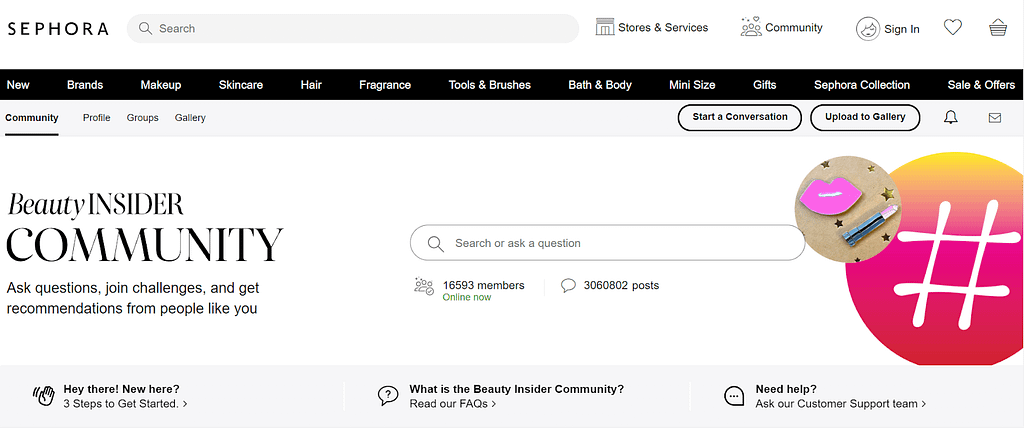
Sephora has the Beauty Insider loyalty program. According to the program, customers can earn points for purchases, receive personalized offers, gifts, and access to exclusive events.
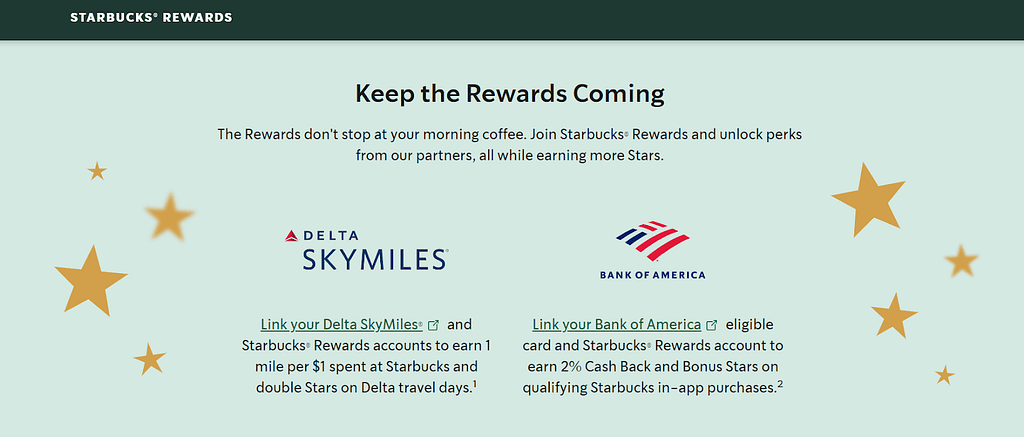
Starbucks Rewards loyalty program enables customers to earn stars for each purchase, which can then be exchanged for free drinks and other bonuses. Customers also receive personalized offers and discounts.
It is important to develop a loyalty program that aligns with the needs and interests of your target audience and regularly analyze its effectiveness, adjusting approaches to maximize results. Implementing a loyalty program is an investment in long-term customer relationships and enhances the competitiveness of your online store.
Email Marketing
To keep customers hooked through email marketing, you’ve got to follow a few smart strategies:
- Personalization: Use customer data to personalize your emails. Send tailored product suggestions that match each customer’s taste.
- Consistency: Keep in touch with customers regularly without bombarding them with emails. Find the sweet spot of how often to ping them (usually 1 to 4 times a month) to stay connected without being a pest.
- Content: Serve useful content in your emails like handy tips, articles, product reviews, and exclusive deals for subscribers.
- Call-to-Action: Always add a clear call-to-action in your emails. Invite customers to buy something new or join a promo or visit your site.
- Segmentation: Split your customer base into groups and send tailored messages based on their interests and actions.
Well-planned email marketing keeps you on your customers’ radar, nudges them back to your store, and boosts repeat purchases.
Get more tips on email marketing examples: Best Black Friday Marketing eCommerce Campaigns
Mobile Optimization
Mobile optimization is key for keeping customers happy as more folks shop on mobile devices. Here’s how mobile optimization can help retain customers:
- Responsive Design: Make sure your site looks good on all mobile devices for a smooth shopping experience.
- Quick Page Loads: Speed up page loading on mobiles to prevent losing customers due to slow load times.
- Easy Navigation: Keep it simple to find products and make payments on the mobile site.
- Mobile App: Progressive Web Applications (PWAs) are a smart way to build an app that loads fast and works well without breaking the bank. PWAs load fast and work smoothly while letting users access content even offline. Having a PWA on their home screen makes it easy for users to reach your store. Plus, push notifications keep them in the loop about new stuff and promos. Offer secure payment options through mobiles for quick checkout that keeps things smooth for customers.
By implementing these mobile optimization strategies, businesses can enhance customer experience, increase engagement, and improve retention rates among mobile users.
Read more: Mobile Optimization for Online Stores
Voice and Text Recognition
According to statistics, 38% of Generation Z customers (the most active segment of shoppers born between 1997 and 2012) prefer voice search. The younger generation values time and does not want to spend it on typing. Therefore, it becomes crucial to implement technologies that simplify customer interaction with the website. Let’s explore several technologies:
- Voice Search: Implementing voice search functionality on the website or in the mobile application allows customers to quickly find the desired products, making the purchasing process more convenient. For example, Walmart has introduced a voice shopping assistant through Google Assistant.
- Personalized Recommendations: Using text recognition technology to analyze customer preferences and offer personalized product recommendations can enhance the shopping experience. For instance, Amazon utilizes machine learning algorithms to predict customer preferences.
- Feedback and Support: Implementing chatbots with voice and text recognition capabilities for feedback and online customer support can significantly improve service. For example, Sephora uses a chatbot to assist customers in selecting cosmetics.
- Convenient Checkout Process: Integrating voice recognition technology for filling out order forms or leaving comments can simplify the purchasing process and increase conversion rates.
By incorporating these technologies, businesses can cater to the preferences of the younger generation, enhance user experience, and boost customer engagement on their platforms.
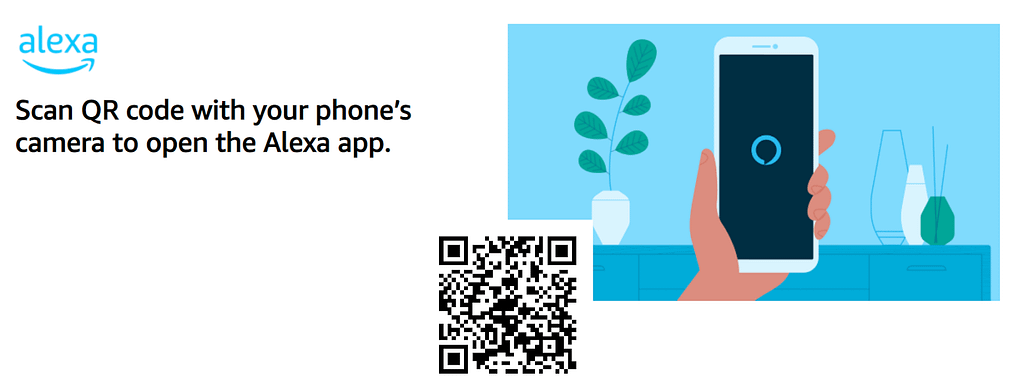
For instance, Amazon extensively utilizes voice recognition technology through its voice assistant, Alexa. Users can make purchases, obtain information about products, and much more by using voice commands.
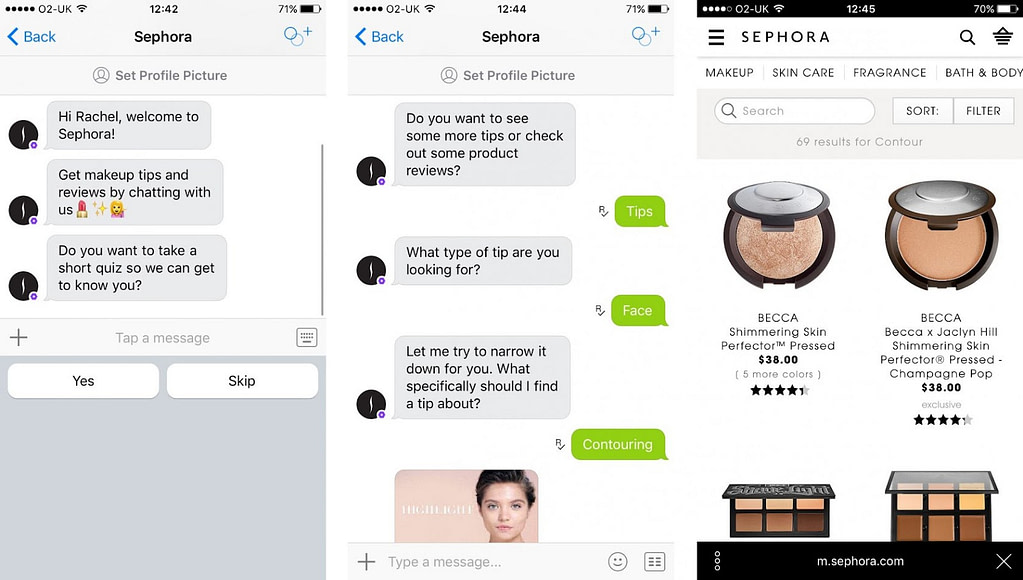
Sephora has implemented chatbot technology with text recognition capabilities to assist customers in selecting cosmetics and skincare products. This helps enhance service quality and retain customers.
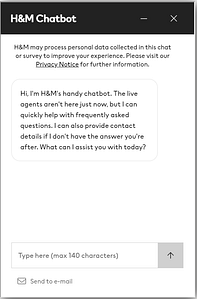
The H&M chatbot on the Kik messenger utilizes artificial intelligence to suggest outfits based on the user’s style preferences and recent purchases. The chatbot also provides links for purchasing the recommended items directly on the H&M website.
VR and AR
Virtual and Augmented Reality (VR and AR) can serve as powerful tools for customer retention in an online store by creating a unique and interactive shopping experience. Let’s explore the different applications of VR and AR below:
- Virtual Try-On: Implementing virtual fitting functionality allows customers to “try on” products before making a purchase, boosting confidence in their choices and reducing the likelihood of returns.
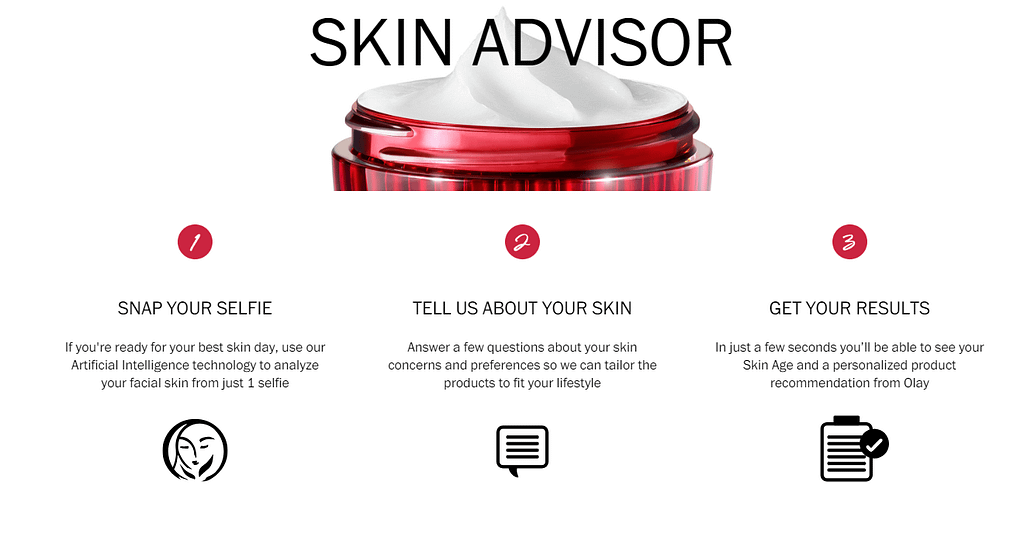
Skin Advisor Online Platform by Olay analyzes users’ skin through a photo and recommends suitable products. The platform has been operational since 2017, with 94% of the 6 million users who utilized the service being satisfied with the recommendations.

SeeWhatHappens, our client, utilizes virtual try-ons for visualizing the customer experience with eyewear.
- Virtual Tours: Providing virtual tours of the store on the official website helps reduce barriers for customers while providing them with an engaging experience.

For example, the virtual tour of NH Hotel Group allows guests to explore the hotel’s premises in detail through panoramic 360-degree views, aiding them in making informed decisions about visiting the hotel.

IKEA offers the IKEA Place app, enabling users to place furniture in their space using AR technology.
- Interactive Educational Materials: Using VR and AR to create interactive educational materials or product demonstrations helps attract customer attention and increase their engagement. For instance, users can take a virtual tour of a virtual store where they can interact with products, access detailed information, and even “try on” items.
- Interactive Catalogs: Developing interactive product catalogs using AR allows customers to examine products in more detail and access additional information. These catalogs may include interactive elements such as 360-degree images, animations, color variations, or product configurations, making the selection and purchasing process more engaging and informative for consumers.
Read more: Perfect Product Page for Marketplaces
Search by Photo
The ability to search for products using images captures users’ attention and makes the purchasing process more engaging and interesting. This helps retain users on the site longer and encourages them to explore the assortment further.

On Pinterest, users can search for ideas, inspiration, and products through images. With the image search feature, users can look for products, fashion trends, and design ideas.

ASOS, an online store for trendy clothing and accessories, offers the “Style Match” feature, allowing users to upload an image of a desired product or style to find similar items in the store’s app.
Product Filters
Convenient product filters enable customers to quickly find the items they need based on their preferences and criteria such as size, color, brand, and more. This enhances website navigation, saves customers time, and makes the product search process more convenient and efficient.
Virtual Wallet
Utilizing a virtual wallet is an effective strategy for rewarding loyal customers, incentivizing repeat purchases, and strengthening audience loyalty. Below are several ways in which a wallet can be leveraged as a online customer retention tool:
- Bonus and Rewards System: Offering customers the opportunity to earn bonuses with each purchase and store them in their wallet for future orders. This encourages customers to make new purchases and remain loyal to your brand.
- Exclusive Offers: Providing wallet holders access to exclusive discounts and promotions can serve as an additional incentive to use funds from the wallet and increase purchase frequency.
- Payment Convenience: A quick and convenient payment process through the wallet enhances the overall shopping experience for customers, leading to increased satisfaction levels and the likelihood of repeat orders.
Cashback
Offering cashback to customers in the form of real money or marketplace currency for their purchases incentivizes repeat purchases and increases loyalty, enhancing website retention. Customers can use the earned cashback for future purchases, creating an additional incentive to return to the store.
A Case Study of How We Helped Our Client Enhance Business Attractiveness with Retaining Strategies

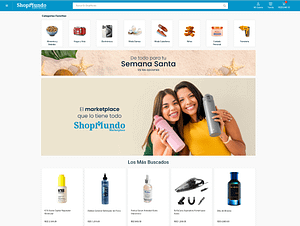
A client from the Dominican Republic – the multi-product marketplace Shopmundo – approached us for development and enhancements of their mobile application. The Simtech Development team conducted a series of tasks that helped retain customers:
- Bug fixes and performance improvements: By addressing errors, optimizing functionality, and enhancing the application’s performance, customers no longer encountered issues with lagging and errors.
- Enhancing reliability and stability: Rectifying poorly written code and implementing CS-Cart standards helped eliminate marketplace malfunctions, leading to increased reliability and stability.

- Implementation of new features: Developing new functionality such as quick checkout, a virtual wallet for shoppers, and launching PWA application for Shopmundo enhanced the user experience and provided customers with additional conveniences when using the application.
- Personalization and ease of use: Improvements in the interface, addition of new features, and a personalized approach to customers helped create a more appealing and user-friendly application that meets user needs.
Mr. Chang, the company’s CEO, was pleased with the results and requested the Simtech Development team to remain on the project for further website development.
Conclusion
With years of experience in developing and optimizing online platforms, Simtech Development offers digital entrepreneurs a reliable partnership for enhancing and expanding their businesses. Our team of specialists is ready to help implement innovative solutions, optimize processes, and create unique user interfaces that contribute to effective eCommerce customer retention. Trust the professionalism and expertise of Simtech Development for the successful growth of your online project.

